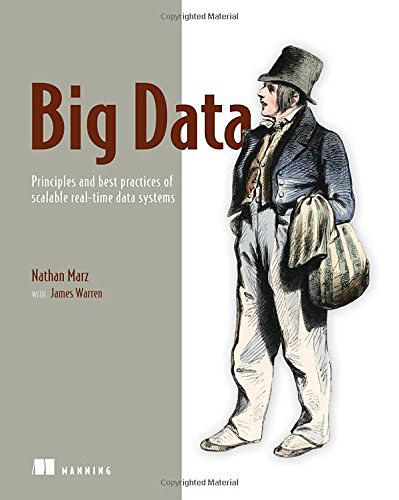Big Data
内容简介
Services like social networks, web analytics, and intelligent e-commerce often need to manage data at a scale too big for a traditional database. Complexity increases with scale and demand, and handling big data is not as simple as just doubling down on your RDBMS or rolling out some trendy new technology. Fortunately, scalability and simplicity are not mutually exclusive—you just need to take a different approach. Big data systems use many machines working in parallel to store and process data, which introduces fundamental challenges unfamiliar to most developers.
Big Data teaches you to build these systems using an architecture that takes advantage of clustered hardware along with new tools designed specifically to capture and analyze web-scale data. It describes a scalable, easy to understand approach to big data systems that can be built and run by a small team. Following a realistic example, this book guides readers through the theory of big data systems, how to implement them in practice, and how to deploy and operate them once they're built.
Big Data shows you how to build the back-end for a real-time service called SuperWebAnalytics.com—our version of Google Analytics. As you read, you'll discover that many standard RDBMS practices become unwieldy with large-scale data. To handle the complexities of Big Data and distributed systems, you must drastically simplify your approach. This book introduces a general framework for thinking about big data, and then shows how to apply technologies like Hadoop, Thrift, and various NoSQL databases to build simple, robust, and efficient systems to handle it.
......(更多)
作者简介
Nathan Marz is an engineer at Twitter. He was previously Lead Engineer at BackType, a marketing intelligence company, that was acquired by Twitter in July of 2011. He is the author of two major open source projects: Storm, a distributed realtime computation system, and Cascalog, a tool for processing data on Hadoop. He is a frequent speaker and writes a blog at nathanmarz.com.
Sam Ritchie is an engineer at Twitter who uses Cascalog and ElephantDB to process and analyze many terabytes of data in near real-time. He is also the lead developer on FORMA, an open-source deforestation monitoring system in use by a number of top research institutions. He is a committer on Cascalog, ElephantDB, Pallet and a number of other open source Clojure projects.
......(更多)
目录
1. A new paradigm for Big Data - FREE
2. Data model for Big Data - AVAILABLE
3. Data storage on the batch layer
4. MapReduce and batch processing
5. Batch processing with Cascading
6. Basics of the serving layer
7. Storm and the speed layer
8. Incremental batch processing
9. Layered architecture in-depth
10. Piping the system together
11. Future of NoSQL and Big Data processing
Appendix A: Hadoop
Appendix B: Thrift
Appendix C: Storm
......(更多)
读书文摘
A trick employed in the Lambda Architecture is to push complexity out of the core components and into pieces of the system whose outputs are discardable after a few hours.
familiar complexity - complexity that's so ingrained, you don't even think to find a way to avoid it.
......(更多)






